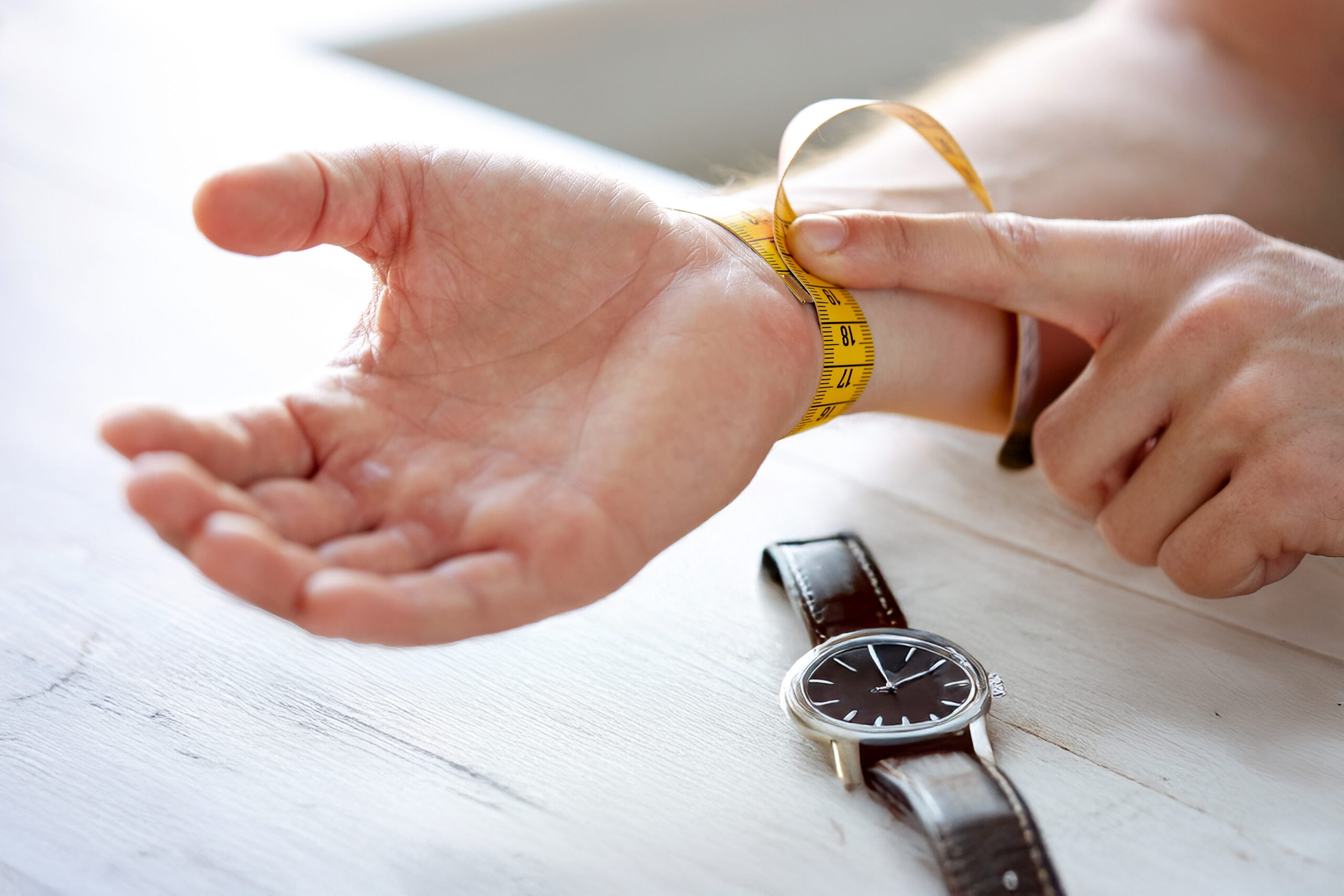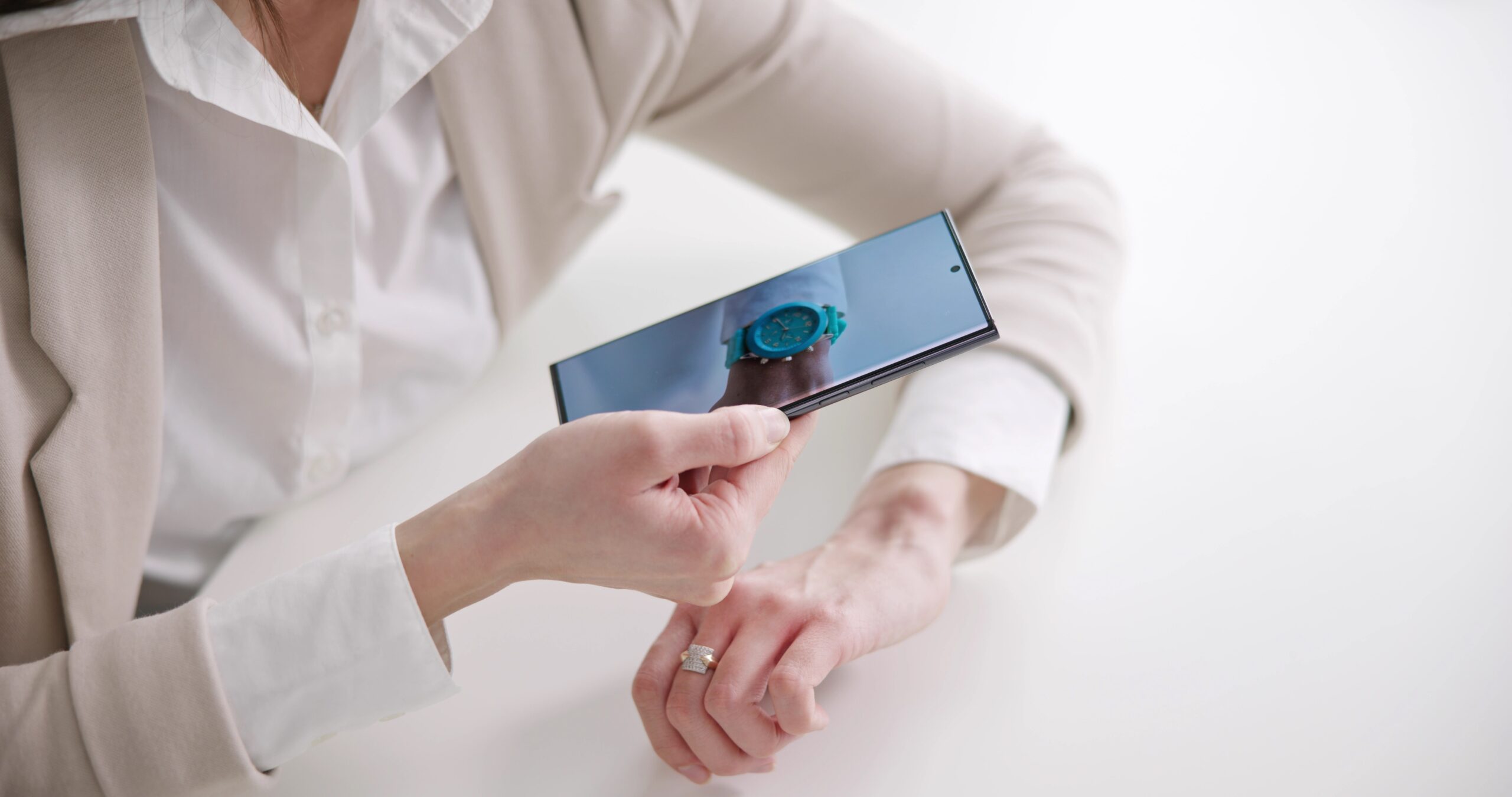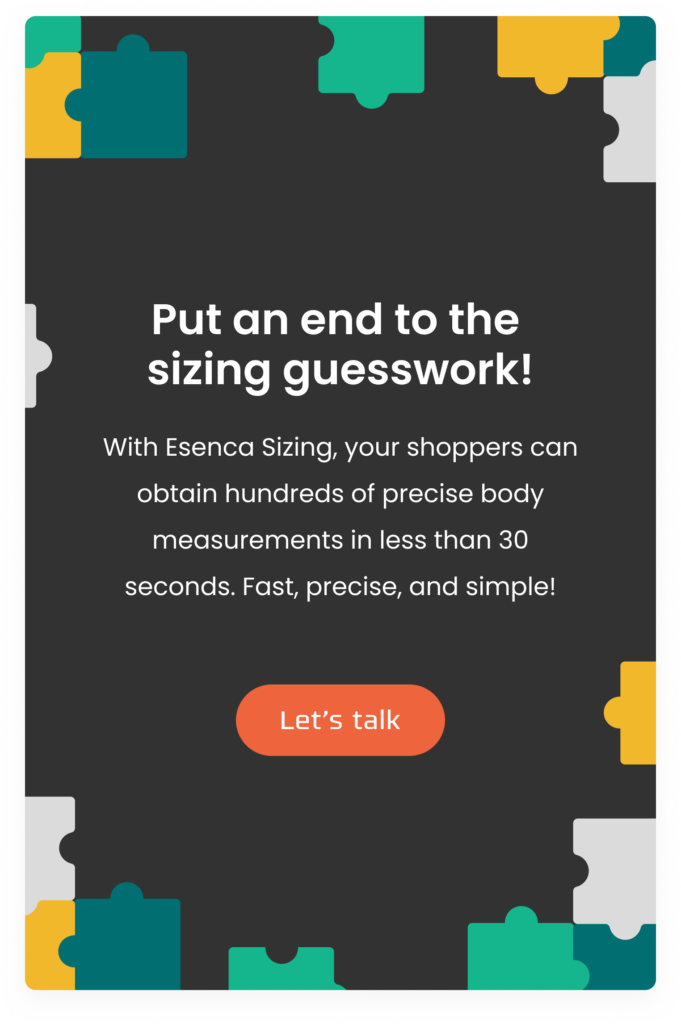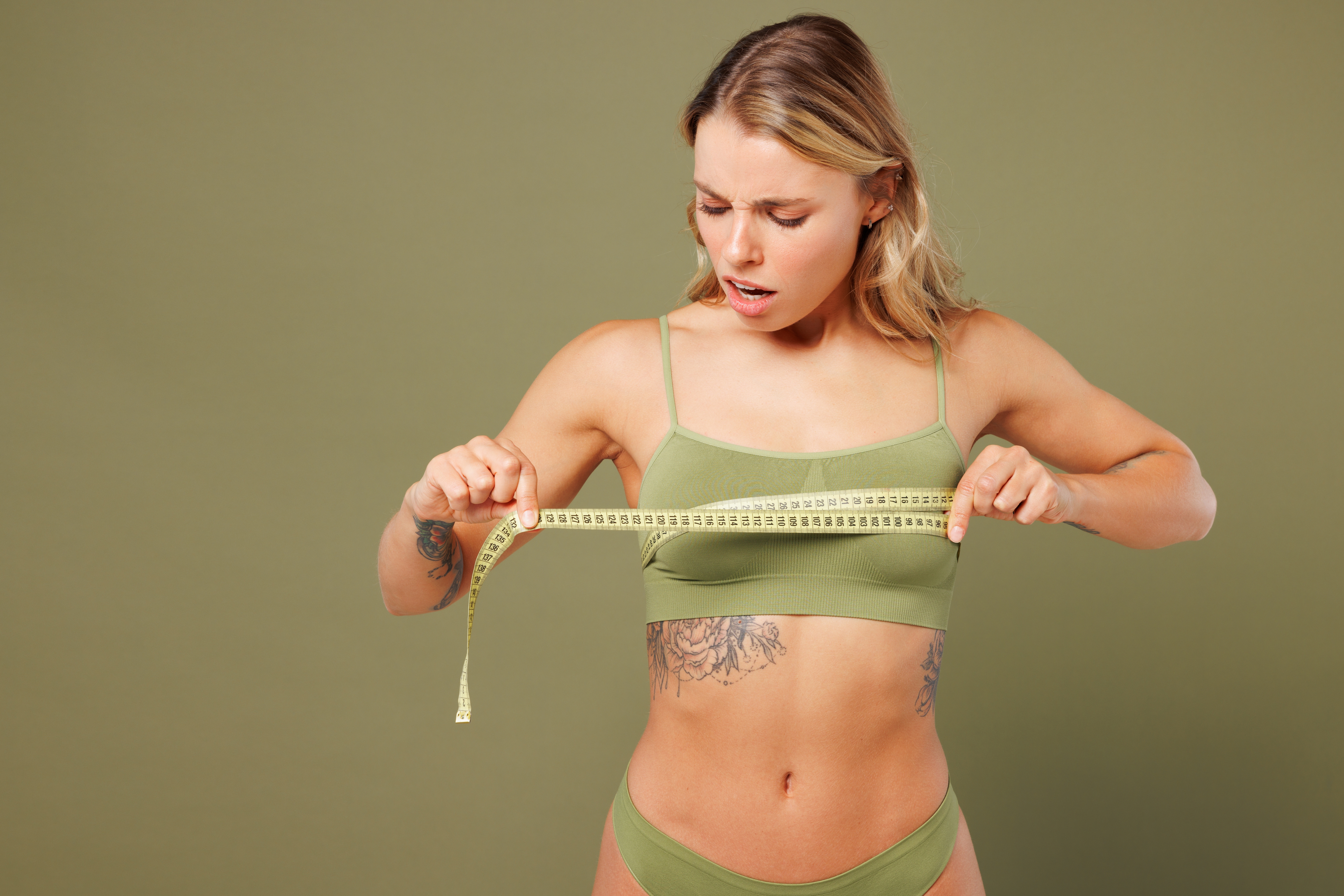
Like with selecting any accessory that touches your body, knowing how to choose the perfect watch for your wrist size is crucial for comfort, style, and protecting your investment. A poorly fitted timepiece creates more problems than you might expect.
A loose-fitting watch slides around your wrist, looking sloppy while making your timepiece vulnerable to unnecessary knocks and expensive repairs. On the flip side, a watch that’s too tight leaves uncomfortable marks on your skin and turns wearing your favourite timepiece into an annoying daily struggle. When you learn how to measure your wrist for a watch accurately, you’ll be better equipped to determine the perfect watch strap size.
While each wrist is different, there are some measuring standards you can consider. For men, wrist circumferences typically range from 6-6.5 inches (15-16.5 centimetres) for smaller wrists to 7.25-8 inches (18-20 centimetres) for larger ones. Women’s wrists generally measure between 5.5-6 inches (13.5-15 centimetres) on the smaller side and 6.5+ (16.5 centimetres) inches for larger wrists).
Additionally, understanding your wrist measurement helps you make smarter purchasing decisions. Most experts recommend adding about 0.5 inches (1.3 centimetres) to your measurements for a comfortable fit, though this varies based on personal preference—add 0.25 inches (0.7 centimetres) for a snug fit or 0.75 inches (2 centimetres) if you prefer a looser feel.
To demonstrate its effectiveness, our guide will teach you how to use it. Understand the simple process of correctly measuring your wrist and what those measurements mean. Select watches that will look and feel perfect on you. Learn how to determine the perfect fit for your watch!
Why Wrist Size Matters When Choosing a Watch.
Understanding the relationship between your wrist and your watch goes far beyond simple appearances. Selecting a timepiece that sits perfectly on your wrist ensures both comfort and style work together, creating a harmonious look that enhances your overall appearance.
Comfort vs. style: striking the right balance
Achieving harmony between your timepiece and wrist requires understanding proportion. A watch should occupy approximately two-thirds of your wrist width for optimal balance. Case thickness similarly affects both comfort and style—thinner watches appear more elegant and subtle, perfect for formal occasions, whereas thicker cases create a robust, sportier look. Furthermore, lug-to-lug measurement often matters more than case diameter for comfort, as it determines how well the watch conforms to your wrist shape.
Common issues with poor fit
Want to know what happens when sizing goes wrong? The problems affect both appearance and comfort:
- A watch that’s too tight leaves uncomfortable indentations, restricts circulation, and places unnecessary pressure on spring bars (the pieces connecting straps to lugs)
- Oversized watches with lugs extending beyond your wrist edges appear unstable and disproportionate
- Loose-fitting watches slide constantly, making them prone to knocks and damage, especially with heavier timepieces
- Improper fit can make reading time difficult as the watch face shifts position frequently.
Notably, wrist shape matters alongside size – some wrists are flat and narrow, while others are rounder. This variation affects how different watch designs sit against your skin.
How wrist size affects watch durability
Properly sized watches last longer primarily because they experience less physical stress. A watch that’s too loose means the timepiece isn’t securely fixed to your wrist, making it susceptible to bangs against surrounding objects. Additionally, constant movement can stress components and lead to premature wear.
For heavier watches specifically, proper sizing becomes even more critical – the greater the weight, the more likely it will highlight issues with case ergonomics, lugs, and bracelet integration. And obviously, ensuring your watch fits correctly based on your wrist measurements protects your investment while maintaining comfort throughout daily wear.
How to Measure Your Wrist for a Watch

Should we focus less on talking and more on measuring? Agreed!
Accurately measuring your wrist is the first step toward finding a watch that fits perfectly. Our guide outlines several effective methods below that require minimal tools you likely already have at home.
Using a soft measuring tape
Measuring tapes provide the most direct and accurate way to determine wrist size:
- Place your arm on a flat surface with your palm facing upward and fingers gently outstretched.
- Wrap the measuring tape snugly around the narrowest part of your wrist, just below the wrist bone where you typically wear a watch.
- Note the measurement where the tape overlaps—this is your wrist circumference.
- For comfort, add approximately 0.5 inches (1.3 centimetres) to this measurement when selecting a watch band.
String and ruler method
Don’t have a measuring tape? This alternative works just as effectively:
- Lay your arm flat on a surface with the palm facing up.
- Take a piece of string (or even a shoelace) and wrap it around your wrist until the end touches the rest of the string.
- Mark or pinch the area where the ends overlap.
- Lay the string flat against a ruler to determine the length.
Paper strip or dollar bill method
For quick assessments without specialised tools:
- Cut a thin strip of paper from any available source—printer paper works well.
- Wrap it around your wrist, marking where the ends meet.
- Measure the marked paper with a ruler.
Alternatively, wrap a dollar bill around your wrist—each bill is approximately six inches long. This method can help determine if you need a small-, medium-, or large-sized watch.
Handy Wrist Measurement Tips
To ensure precision in your measurements:
- Measure at the exact location where you’ll wear your watch.
This ensures the most accurate sizing for your specific wearing preference.
- Keep the measuring tool flat against your skin.
Ensure the measuring tool lies flat against your skin without twisting.
- Apply consistent tension.
It is snug enough to stay in place but not so tight that it leaves marks.
- Account for different strap materials.
For metal bracelets, add 0.5 inches (1.3 centimetres); for leather straps, add 0.75 inches (2 centimetres) to your measurement.
- Round up when in doubt.
When in doubt, round up to the nearest half-inch (1.3 centimetres) rather than down.
Matching Watch Size to Your Wrist
Once you’ve measured your wrist circumference, the next crucial step involves selecting a watch with proportions that complement your unique dimensions. Proper watch sizing creates visual harmony that enhances both comfort and style.
Understanding case diameter and wrist width
The case diameter, measured in millimetres across the watch face, is the primary sizing factor for watches. Common sizes typically range between 38mm and 46mm. For optimal appearance, your watch case should occupy approximately 60-75% of your flat wrist width. To calculate your flat wristwidth, measure your wrist circumference in millimetres and divide it by three.
Ideal watch sizes for small, medium, and large wrists
Watch size recommendations based on wrist circumference:
- Small wrists (5.5-6.5 inches/14-16.5 cm):
- Ideal case diameter: 34-38mm
- Traditional dress watches: 36-38mm
- Medium wrists (6.5-7.5 inches/16.5-19cm):
- Ideal case diameter: 38-42mm
- Most versatile range for average wrists
- Large wrists (7.5+ inches/19 cm+):
- Ideal case diameter: 42-46 mm
- Can comfortably accommodate larger statement pieces
How to measure the width of your wrist for a watch face
First, determine your wrist’s widest point where the watch will sit. Second, measure this flat section. Finally, select a watch whose case diameter is proportional to this measurement.
Beyond circumference, wrist width significantly impacts how a watch appears on your wrist. During fitting, note where your wrist starts to curve downward—this indicates the effective flat surface of a watch, specifically referring to its lug-to-lug measurement. This measurement should not exceed this width; otherwise, straps will angle sharply downward, creating an awkward appearance.
Adjusting for Strap Types and Fit Preferences
Different strap materials require specific adjustments to your wrist measurements for optimal comfort and fit. Understanding these variations helps ensure your timepiece feels comfortable throughout daily wear.
Different strap materials require specific adjustments to your wrist measurements for optimal comfort and fit. Understanding these variations helps ensure your timepiece feels comfortable throughout daily wear.
Metal bracelets: add 0.5 inch (1.3 centimetres)
Different strap materials require specific adjustments to your wrist measurements for optimal comfort and fit. Understanding these variations helps ensure your timepiece feels comfortable throughout daily wear.
Leather and rubber straps: add 0.75 inch (2 centimetres)
After measuring your wrist circumference, adding 0.5 inches (1.3 centimetres) provides the ideal allowance for meta The extra space in the bracelets accommodates their rigid structure while ensuring that they do not slide excessively. For precise sizing, consider removing excess material. Attach an equal number of links to both sides of the clasp to maintain proper balance.
NATO and fabric straps: add 1 inch (2.5 centimetres)
Fabric straps, particularly NATO styles, benefit from a full inch (2.5 centimetres) of additional space. This extra allowance accommodates their unique threading method, which loops through spring bars for enhanced security even if one spring bar fails.
Snug vs. loose fit: how to decide
The ideal watch fit allows one finger (preferably your pinky) to slide between your wrist and the band. Too tight, and you’ll experience discomfort or restricted blood flow; too loose, and your watch risks excessive movement and potential damage.
When to resize and how professionals can help
Consider professional help for:
- High-value timepieces
- Complex bracelet mechanisms
- Watches with screw-in pins
Professional resizing preserves your watch’s value and prevents common DIY mistakes like stripped screws, lost pieces, and scratched bands.
Conclusion
The evidence is clear. Companies adopting these technologies report substantial reductions in returns, directly cutting shipping emissions and landfill waste. More importantly, when clothing fits properly from the start; it stays in wardrobes longer, tackling the root cause of textile waste rather than just treating the symptoms.
This timing couldn’t be better. The sustainable fashion market expects dramatic growth: from $8.04 billion in 2024 to $58.03 billion by 2035 . Meanwhile, regulators worldwide are cracking down on greenwashing, with recent EU directives already reducing misleading environmental claims by 20%.
Fashion’s future depends on solving its core inefficiencies rather than surface-level fixes. Digital sizing tools address the industry’s most pressing challenge—the massive environmental cost of poor fit. Through accessible technology like Esenca Sizing’s solutions, brands can finally align profitability with genuine environmental responsibility.
anchor
FAQ
How do digital sizing tools contribute to sustainable fashion?
Digital sizing tools reduce return rates by 25–40% on average, significantly decreasing shipping emissions and textile waste. They also enable the creation of digital samples, reducing the need for physical prototypes and minimising material waste during the design process.
What are the environmental impacts of clothing returns?
Clothing returns contribute to approximately 168,337 tonnes of landfill waste and over 1 million tonnes of CO₂ emissions annually in the US alone. Many returned items end up in landfills rather than being resold, especially if returned out of season.
How accurate are AI-powered body measurement systems?
Modern AI-powered body measurement systems can achieve accuracy rates above 95%. Some solutions can create up to 50+ body measurements from just 4-6 simple survey responses, making professional-grade measurements accessible to anyone with a smartphone.
What is “bracketing” in online shopping, and how does it affect sustainability?
“Bracketing” is when online shoppers purchase multiple sizes of the same item with the intent to return those that don’t fit. This practice, engaged in by 48% of online shoppers, significantly contributes to high return rates and increased environmental impact from shipping and potential waste.
How are digital twins used in fashion sizing technology?
Digital twins are virtual replicas of garments that simulate not just appearance but also fabric properties and drape. These digital garments are combined with customer body data to predict fit with high precision, helping to identify potential fit issues before purchase and reduce returns.
How Esenca Sizing Can Help
Technology has made an impact in the measuring department as well, bringing forward several tools for shoppers to use to quickly identify the correct sizing.
Esenca Sizing is one trustworthy example. This solution brings forward hundreds of body measurements in under 30 seconds. Not only is the sizing data impressively precise, allowing shoppers to choose the correct size every single time, but the actual measuring process is straightforward and easy to follow. With dedicated body, hand, and feet modules, online brands can ensure their customers can obtain accurate information, ultimately reducing returns, boosting sales, and improving customer satisfaction.
With only two photos taken with the user’s smartphone camera, connected to Esenca Sizing, shoppers can quickly identify their exact measurements, translated in each brand’s size charts.
And everyone in the eCommerce world knows that when shoppers are happy, brands are too.
For more information about how Esenca Sizing can impact your business, make sure to visit our website.





